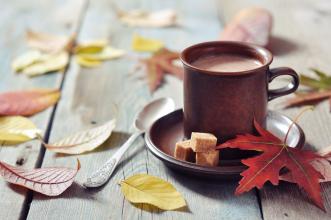Ethiopian coffee beans Brazilian coffee beans
Classification criteria for Brazilian raw coffee beans:
According to the number of defective beans and sundries, it is divided into seven grades of N0.2-No.8, the smaller the number, the higher the grade, and No.2 is the highest grade. According to the size of the particles, it is divided into 9 grades of S12-S20, the larger the number, the bigger the particles, the higher the grade. S20 is the largest particle.
Brazilian coffee generally refers to coffee produced in Brazil. There are many kinds of Brazilian coffee, and like other Arabica coffee, Brazilian coffee is called "Brazils" to distinguish it from "Milds" coffee. Most Brazilian coffee is unwashed and sun-dried and is classified according to the name of the state of origin and the port of transport. Brazil has 21 states and 17 states produce coffee, but four of them produce the largest, accounting for 98 per cent of national production: Parana, Sao Paulo, Minas Gerais and Espirito Santo, with the southern state producing the most, accounting for 50 per cent of total production.
Main varieties
Although coffee is diverse, Brazilian coffee is suitable for the taste of the public. For example, coffee produced in the northern coastal areas has a typical iodine taste, reminiscent of the sea after drinking. This coffee is exported to North America, the Middle East and Eastern Europe. Another kind of coffee that is interesting and worth looking for is washed Bahia coffee. This kind of coffee is not easy to find because Brazil is the world's largest consumer of coffee after the United States, and many of the best coffee can only be found in its domestic market.
Gemma Ethiopia djimmah jimma Gemma mocha coffee beans freshly roasted coffee beans 200g
Ethiopia (Ethiopia) famous coffee: Harald (Harrar), Yega Xuefei (Yirgacheffe), Gemma (Djimmah)
Senlin coffee, which grows in the natural environment and shaded by natural forest trees, has sufficient plant change mechanism to resist the threat of diseases and insect pests, high yield and high quality aroma and flavor. Forest mocha beans account for only 10% of the total coffee production. Jimma (djimmah) Mocha, southwest of Ethiopia, is in the heart of Ethiopia's world coffee birthplace, and with wild forests, it feels a bit like a coffee pilgrimage.
The Jima mocha washed in Ethiopia looks very clean, but somewhat untidy, while untidiness is a nightmare of baking, which is always uneven in depth. In order to appreciate the original flavor, try not to pick too much, so as not to affect the overall taste.
Because they are new coffee beans with high water content, they need to be roasted a little deeper, using low heat to bake city in the city, the surface is slightly oiled, and the beans are brown. After baking, Gemma feels crisp and loose after grinding, and it takes a long time to finish the last point of grinding. It may be that the beans are light and not easy to get down.
The dry aroma of Gemma coffee powder: there is a strong, raging incense wild nostrils, mixed with a little faint earthy smell, compared with the Indonesian Karosi aroma is not so long-lasting.
French pressure pot follicles: there are rich and long-lasting brown grease, taste mild and smooth, clean washing, there is a gentle sour, a little sour.
Washed Ethiopian wild djimmahji Mamoca coffee, under the wild appearance, is the gentle heart; it is indeed a relatively high quality low acidity coffee.

Important Notice :
前街咖啡 FrontStreet Coffee has moved to new addredd:
FrontStreet Coffee Address: 315,Donghua East Road,GuangZhou
Tel:020 38364473
- Prev

How to make fine coffee in Italian mocha pot
Italian mocha pot is a classic choice. Simple and easy to use, the mocha coffee maker is the most kitchen coffee pot. It is a cheap and practical coffee utensil in the West. nowadays, many aluminum mocha coffee pots are produced in Chinese mainland, and this mocha pot budum mold pagoda pot is no exception. But the users of this brand mocha coffee pot have a thicker promise than ordinary mocha pots.
- Next

Coffee roaster roasting Yunnan coffee beans
1, shallow baking (Light) the most light fried culture, no flavor and concentration to speak of, beans are not yet ripe, with the green taste of raw beans, not suitable for grinding and drinking. It's usually used as an experiment. 2. Deep shallow baking (Cinnamon) is also known as cinnamon baking, which is generally popular and has a strong sour taste. The color of beans is quite similar to that of cinnamon, so it is also called cinnamon baking, sour.
Related
- Does Rose Summer choose Blue, Green or Red? Detailed explanation of Rose Summer Coffee plots and Classification in Panamanian Jade Manor
- What is the difference between the origin, producing area, processing plant, cooperative and manor of coffee beans?
- How fine does the espresso powder fit? how to grind the espresso?
- Sca coffee roasting degree color card coffee roasting degree 8 roasting color values what do you mean?
- The practice of lattes: how to make lattes at home
- Introduction to Indonesian Fine Coffee beans-- Java Coffee producing area of Indonesian Arabica Coffee
- How much will the flavor of light and medium roasted rose summer be expressed? What baking level is rose summer suitable for?
- Introduction to the characteristics of washing, sun-drying or wet-planing coffee commonly used in Mantenin, Indonesia
- Price characteristics of Arabica Coffee Bean Starbucks introduction to Manning Coffee Bean Taste producing area Variety Manor
- What is the authentic Yega flavor? What are the flavor characteristics of the really excellent Yejasuffi coffee beans?

